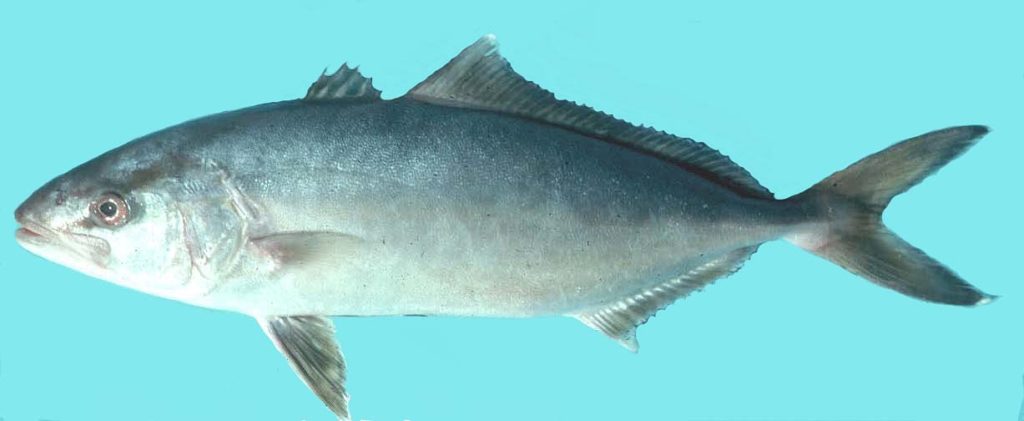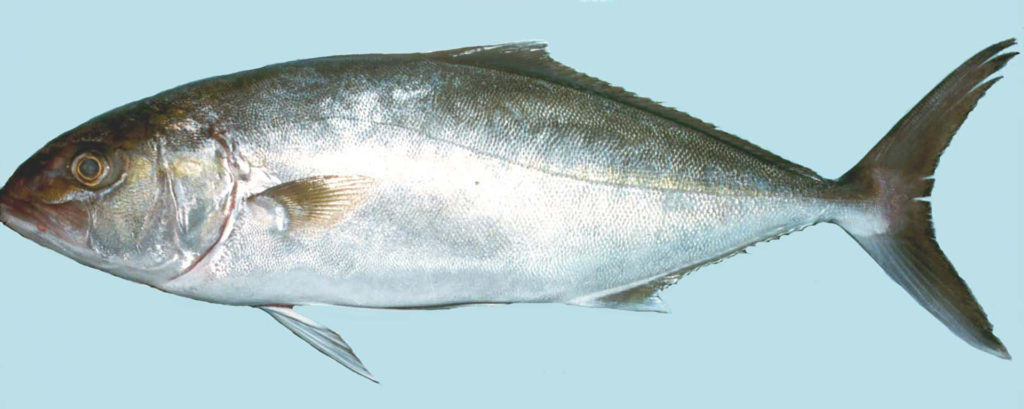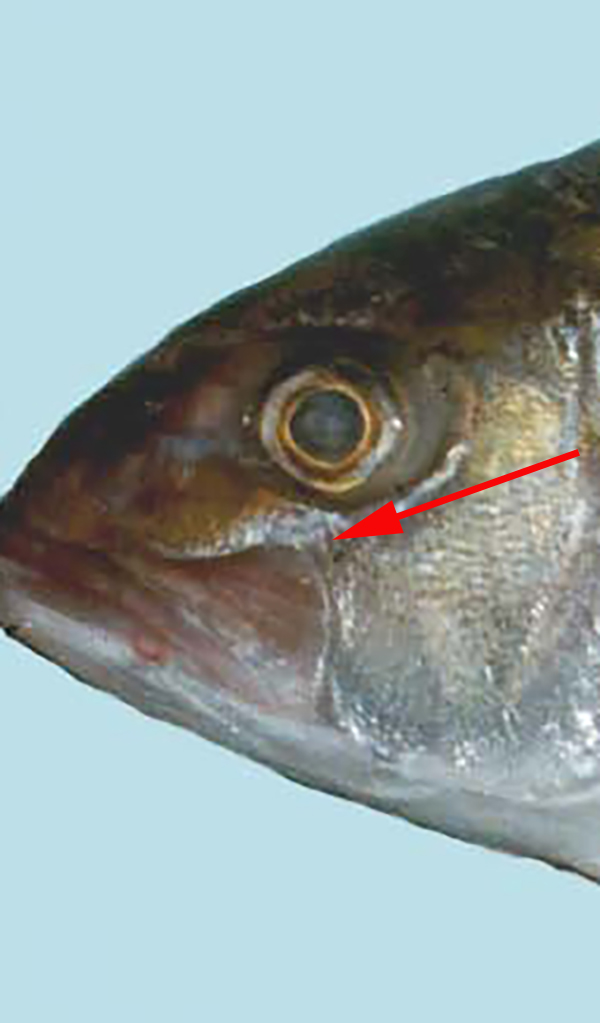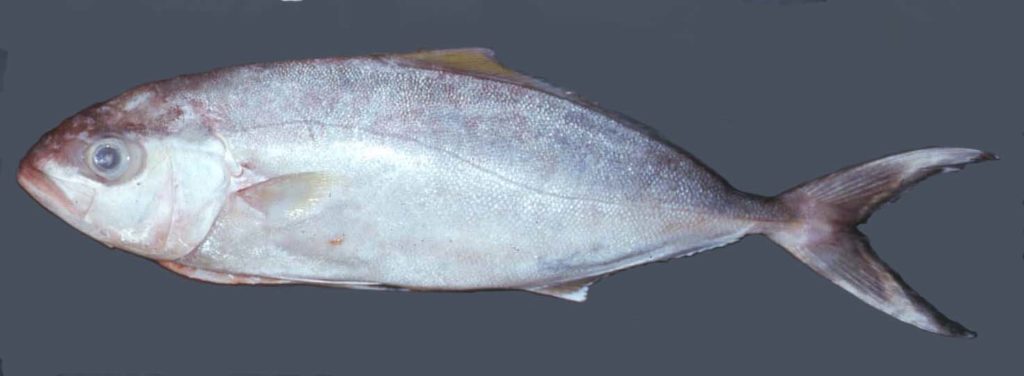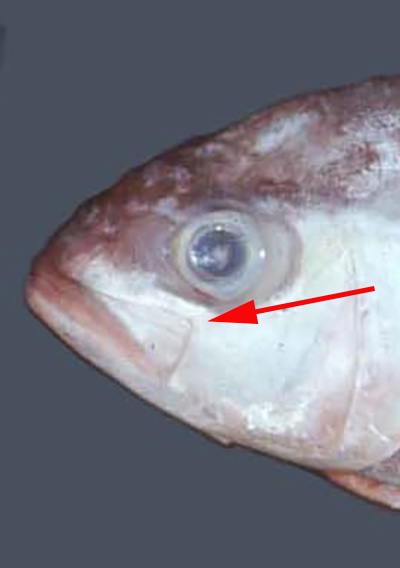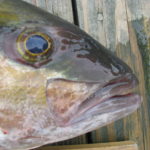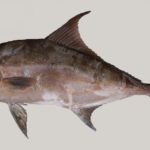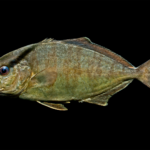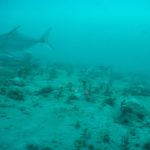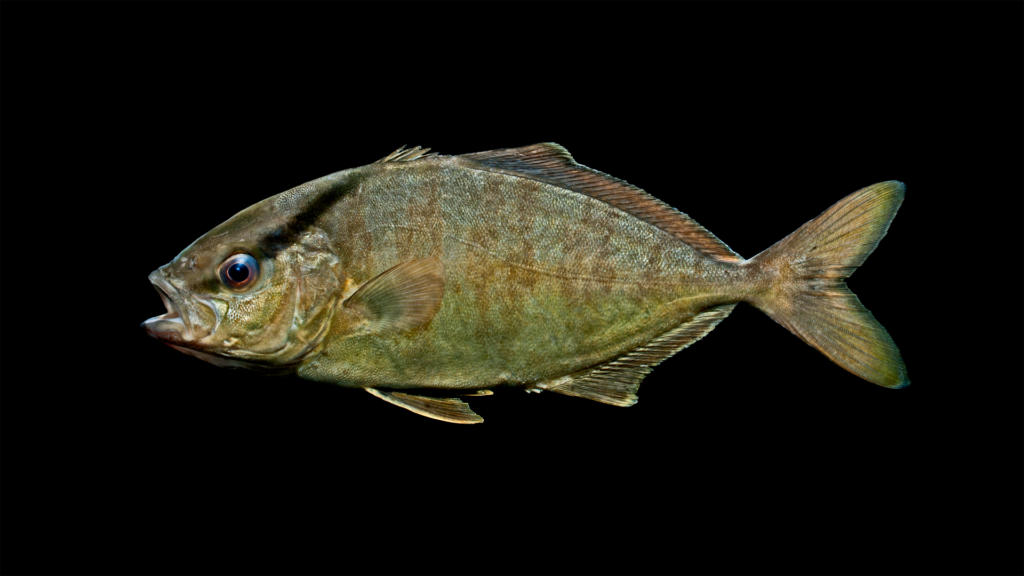
| Family | Scientific Name | Author | Year | Common Name |
| Carangidae | Seriola rivoliana | Valenciennes | 1833 | Almaco Jack |
Seriola rivoliana
Unique Characters: Supramaxilla of adults broad, with posterodorsal angle acute. Body usually dark. Second dorsal fin and anal fin lobes long and pointed. Posterior straight part of lateral line without scutes. Pectoral fins shorter than head length. Body scales oval-shaped. Upper jaw protractile. No semi-detached finlets. Bases of soft dorsal and anal fins unequal in length, anal-fin base about 45-70% of dorsal-fin base. Caudal peduncle grooves present, dorsally and ventrally. No finlets in dorsal and anal fins. Upper jaw ending between vertical through front and rear margins of eye. First dorsal fin with 7 or 8 spines (caution: anterior spines may become embedded in very large fish). Caudal-fin lobes without prominent white tips. Upper jaw extending to vertical at front margin to middle of pupil. Adults with median fleshy keel on side of caudal peduncle absent to moderately developed. Total developed gill rakers 24-27 in fish 10-20 cm fork length, and 21-28 in fish greater than 20 cm fork length. Dorsal-fin lobe 4.0-6.3 times in fork length. Nuchal band, when present, extending from eye to origin of first dorsal fin. Body bands (present to about 20 cm fork length) not extending onto dorsal and anal fins.
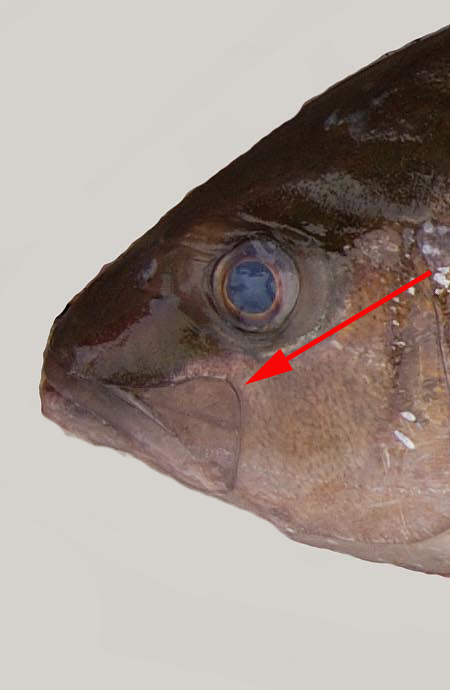
Similar Species:
Banded Rudderfish
Seriola zonata
Greater Amberjack Seriola dumerili.
Lesser Amberjack Seriola fasciata
Banded Rudderfish Seriola zonata. Supramaxilla of adults moderately slender. Posterior straight part of lateral line without scutes. Pectoral fins shorter than head length. Body scales oval-shaped; upper jaw protractile. No semi-detached finlets. Bases of soft dorsal and anal fins unequal in length, anal-fin base about 45-70% of dorsal-fin base. Caudal peduncle grooves present, dorsally and ventrally. No finlets in dorsal and anal fins; upper jaw ending between vertical through front and rear margins of eye. First dorsal fin with 7 or 8 spines (caution: anterior spines may become embedded in very large fish). Caudal-fin lobes without prominent white tips. Upper jaw extending to vertical at front margin to middle of pupil. Adults with median fleshy keel on side of caudal peduncle absent to moderately developed. Total developed gill rakers 14-20 in fish 10-20 cm fork length, and 11-16 in fish greater than 20 cm fork length. Nuchal band, if present, extending from eye to origin of first dorsal fin. First dorsal-fin spines usually 8; dorsal-fin rays 33-39; body bands (present to about 25 cm fork length) solid and regular, extending onto dorsal and anal fins. Anal-fin base short, contained 1.6-2.1 times in second dorsal-fin base.
Greater Amberjack Seriola dumerili. Supramaxilla of adults broad, with posterodorsal angle rounded. Nuchal band, if present, extending from eye to origin of first dorsal fin. Body mostly brown. Posterior straight part of lateral line without scutes. Pectoral fins shorter than head length. Body scales oval-shaped; upper jaw protractile. No semi-detached finlets. Bases of soft dorsal and anal fins unequal in length, anal-fin base about 45-70% of dorsal-fin base. Caudal peduncle grooves present, dorsally and ventrally. No finlets in dorsal and anal fins; upper jaw ending between vertical through front and rear margins of eye. First dorsal fin with 7 or 8 spines (caution: anterior spines may become embedded in very large fish). Caudal-fin lobes without prominent white tips. Upper jaw extending to vertical at front margin to middle of pupil. Adults with median fleshy keel on side of caudal peduncle absent to moderately developed. Total developed gill rakers 14-20 in fish 10-20 cm fork length, and 11-16 in fish greater than 20 cm fork length. First dorsal-fin spines usually 7; dorsal-fin rays 29-34. Body bands (present to about 20 cm fork length) irregular and divided vertically, terminating on body and not extending onto dorsal and anal fins. Anal-fin base moderately short, contained 1.4-1.7 times in second dorsal-fin base.
Lesser Amberjack Seriola fasciata. Supramaxilla of adults relatively slender and not rounded. Nuchal band, when present, extending from eye to nape, well in advance of dorsal- fin origin. Body often with pinkish cast. Posterior straight part of lateral line without scutes. Pectoral fins shorter than head length. Body scales oval-shaped. Upper jaw protractile. No semi-detached finlets. Bases of soft dorsal and anal fins unequal in length, anal-fin base about 45-70% of dorsal-fin base. Caudal peduncle grooves present, dorsally and ventrally. No finlets in dorsal and anal fins. Upper jaw ending between vertical through front and rear margins of eye. First dorsal fin with 7 or 8 spines (caution: anterior spines may become embedded in very large fish). Caudal-fin lobes without prominent white tips. Upper jaw extending to vertical at front margin to middle of pupil. Adults with median fleshy keel on side of caudal peduncle absent to moderately developed. Total developed gill rakers 24-27 in fish 10-20 cm fork length, and 21-28 in fish greater than 20 cm fork length. Dorsal-fin lobe 6.4-8.6 times in fork length. Body bands (present to about 20 cm fork length) extending onto dorsal and anal fins.
Gallery
